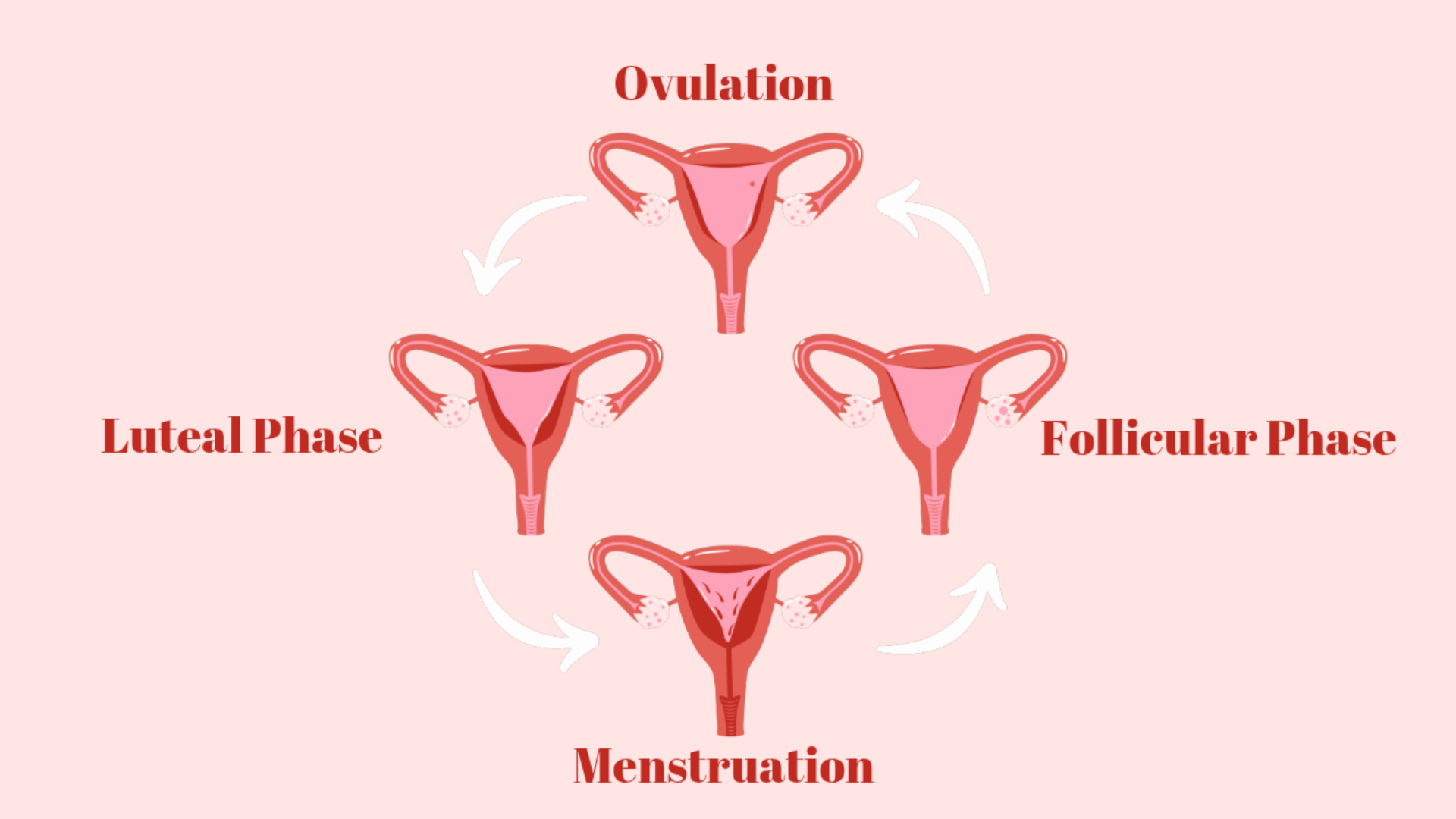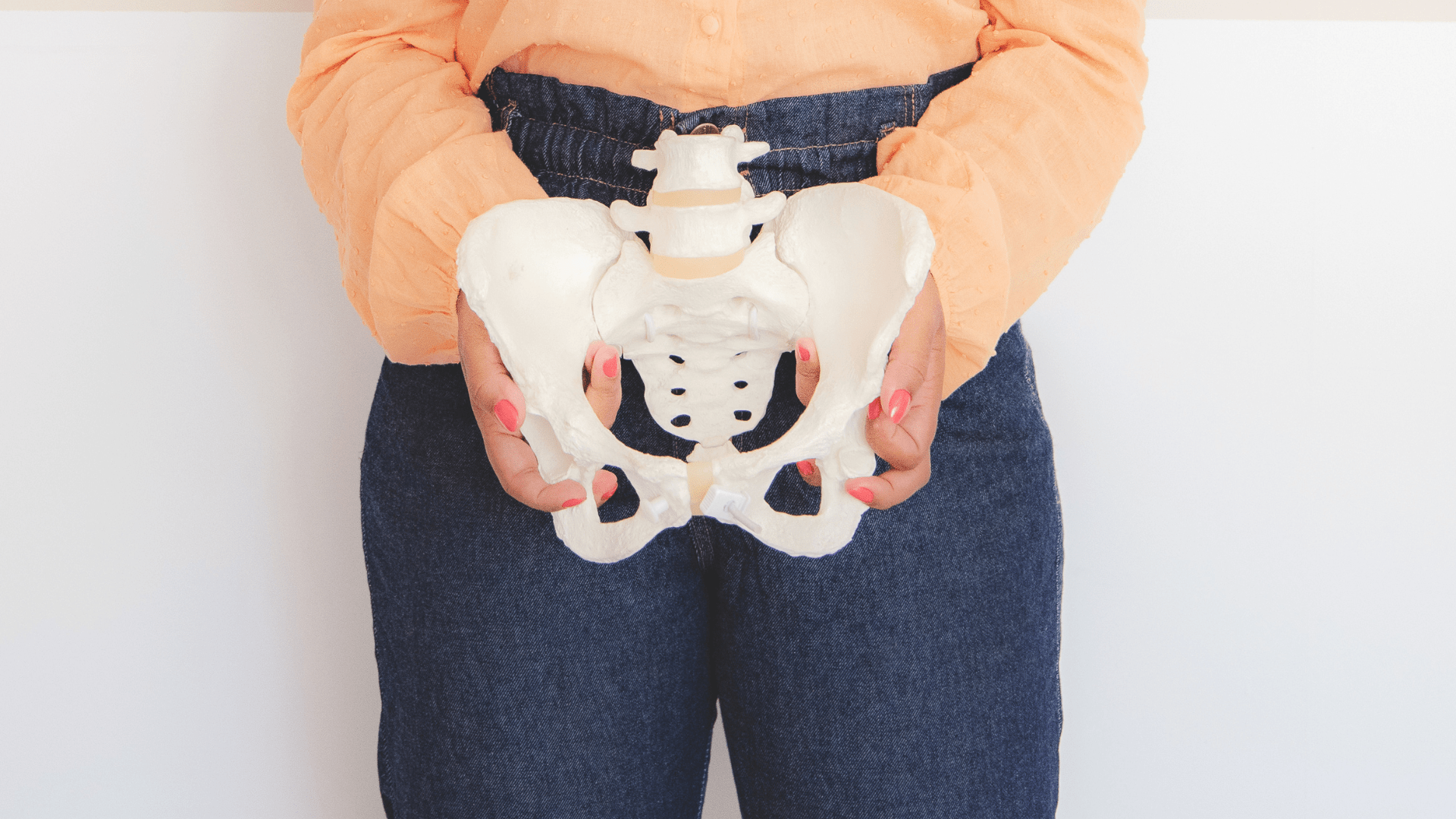Let’s be honest. When most people think of the menstrual cycle, they picture the blood, the cramps, and maybe a chocolate craving (or 10).
The truth is, the menstrual cycle is more than that. It is a complex hormonal rhythm with many changes going on behind the scenes that most people aren’t aware of. The knowledge most people have of the menstrual cycle comes from long, boring biology classes, or the timeless Nigerian classic:
“Now that you’ve seen your period, you’re a woman. Don’t let a boy touch you or you’ll get pregnant!”
But what of the real stuff no one taught you? The things you actually need to know? The reality is that whether you are trying to conceive, manage your hormonal symptoms, or just want to know your body better, the key is understanding your menstrual cycle.
This simple guide breaks down the menstrual cycle phases, what happens in each phase, and why tracking your cycle is one of the smartest things you can do for your health.
What Is the Menstrual Cycle?
The menstrual cycle is your body’s monthly hormonal routine to prepare for a possible pregnancy. It is not just the period; it involves a collaboration between your brain, ovaries, and uterus (womb), through powerful, tiny chemical messengers known as hormones.
The menstrual cycle is from the first day of your period and ends right before the next one begins. On average, the menstrual cycle lasts 28 days, but anything between 21 and 35 days is normal.
What Are the 4 Phases of the Menstrual Cycle?

Phase 1: The Menstrual Phase
This is the phase most people call “the period”.
It happens because pregnancy didn’t occur and your uterus (not-so-politely), sheds its inner lining through the vagina. It marks day 1 of your menstrual cycle and normally lasts between 2 and 7 days.
Oestrogen and progesterone hormones are at their lowest during this phase. You might experience cramps, mood swings, or fatigue that may leave you wondering why Mother Nature doesn’t just simply text you, “Hey! No bun in the oven. Carry on!”
You might feel like someone should be paying you to survive this ordeal. Real talk? A heating pad, rest, and avoiding all forms of stress could go a long way.
Phase 2: The Follicular Phase
“Getting ready behind the scenes”
This phase overlaps with the first day of your period, but continues after the bleeding stops and before the next phase, ovulation. During this time, your brain releases the Follicle-Stimulating Hormone (FSH) to let your ovaries know it is time to mature an egg. In response, several little sacs called follicles then begin to develop, each holding an immature egg. Eventually, one follicle becomes the dominant egg – the chosen one – that will be released later.
At the same time, oestrogen levels rise, which helps rebuild the uterine lining. This rise in oestrogen also brings better moods and clearer skin — hello, glow-up phase!
Phase 3: Ovulation
“Egg drop alert!”
This is when the ovary releases the mature/dominant egg, thanks to another hormone called the Luteinizing Hormone (LH). The egg travels down to the fallopian tube, ready to meet the sperm for pregnancy to occur.
The egg can survive for 12 to 24 hours, and the sperm can stay in the body for up to 5 days, patiently waiting for the egg to show up. This is the period referred to as the fertile window. If you’re trying to conceive, this is the perfect time. If you’re not, then you need to take extra care with contraception.
You may experience symptoms like breast tenderness, clear stretchy cervical mucus (like egg whites), mild cramps (or in fancy medical speak, Mittelschmerz), and an increased libido.
This is the phase where your hormones make you feel extra flirty. You might even feel like texting that ex who put you through a lot. Your besties at Fertitude say, “Don’t do it, girl. Your body is just ovulating.”
Fun fact: Ovulation test kits work by testing the level of LH in the urine!
Phase 4: The Luteal Phase
“The waiting game before the blood bath”
After ovulation, the follicle that released the egg transforms into the corpus luteum, which sounds like a fancy spell from Hogwarts. Not to fear, it is a temporary gland that releases progesterone, which helps prepare the uterine lining by thickening and stabilising it in case a fertilised egg shows up and pregnancy occurs.
If pregnancy doesn’t happen, progesterone and oestrogen levels drop, which signals your body to shed the thick uterine lining during the 1st day of your period.
Not-so-fun fact: The sudden drops in progesterone can affect your mental health with symptoms like mood swings or irritability. Read more about your menstrual health and mental health here!
Why Should You Track Your Menstrual Cycle?
Tracking your cycle helps you:
- Understand your fertile window if you’re trying to conceive – or trying not to.
- Notice the symptoms and signs of hormonal imbalances early.
- Spot patterns in PMS symptoms to help you prepare better.
- Talk to your doctor about abnormal changes that could help diagnose conditions like PCOS, endometriosis, or fibroids if you have any of them.
Tracking your period can feel daunting, but we’ve got good news — You don’t have to do it alone! The Fertitude app is here to do the heavy lifting for you with smart tracking tools, and our up-to-date friendly AI-health assistant, Kiki, who’s ready to offer personalised support, 24/7.
Final Thoughts
Your menstrual cycle is like your body’s monthly report card. It tells you how your overall health is doing and helps you understand the full story. Understanding your menstrual cycle and its phases can help you work with your body and not against it.
So, the next time someone dismisses it as “just a period”, share this article and educate them that it is a whole complex system tirelessly working in sync and it deserves much more respect!
Frequently Asked Questions
- How long is a normal menstrual cycle?
The normal menstrual cycle lasts 21-35 days, with an average of 28 days.
- What are irregular periods?
Irregular periods are when your menstrual cycle length differs significantly from month to month or when your periods are unpredictable with timing, flow, or duration. This could mean cycles shorter than 21 days or longer than 35 days, not having a period for more than 90 days, heavier or lighter bleeding than normal, bleeding lasting longer than 7 days, or bleeding between periods.
- What causes irregular periods?
Irregular periods can be caused by stress, hormonal imbalances, or conditions like PCOS, fibroids, or endometriosis.
- How do I calculate my ovulation date?
If your cycle is regular, you can estimate your ovulation day by subtracting 14 days from when your next period is meant to start. This is because ovulation typically happens around 14 days from your next period. For example, if your cycle is regular and 28 days, then ovulation would be on day 14; if it’s 30 days, then you’ll likely ovulate on day 16.
Just remember: Day 1 is the first day of your menstrual cycle.
- How do I know when I’m ovulating?
Symptoms and signs of ovulation include clear, stretchy cervical mucus like egg whites, an increase in basal body temperature, or mild cramps. Ovulation test kits can also help predict. If you want to take the guesswork out of tracking, you can get an ovulation test kit here!
- Can I get pregnant during my period?
Although not common, if you have a short menstrual cycle, e.g, 21 to 24 days, and longer bleeding days, you could be fertile towards the end of your period. A practical example: if your cycle length is 22 days and you ovulate on the 11th day, having sex on day 7 (even while still bleeding) could result in pregnancy. This is because the sperm can survive in the body for up to 5 days, and pregnancy can occur if ovulation happens soon after.
- Can I only get pregnant on the day of ovulation?
No. The egg survives for 12 to 24 hours, but the sperm can survive for 5 days. This period is the fertile window, and having sex in the days leading up to ovulation can increase the chance of pregnancy.
- When should I see a doctor about my period?
Seek professional medical advice if you notice heavy bleeding, missed periods, cycles shorter than 21 days or longer than 35 days, or severe pain during your period. This could mean that there is an underlying health condition, like fibroids or endometriosis, that needs a higher level of care. If you don’t know where to start, book a session with a doctor to get started.
References
Stages of Menstrual Cycle: Menstruation, Ovulation, Hormones





